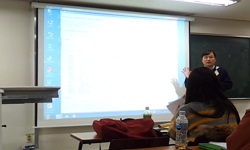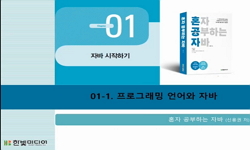본 연구는 돼지 4번 염색체에서 FAT1 좌위의 후보유전자인 Adipocyte Fatty-Acid 결합단백질 (FABP4) 유전자에서 8개의 Single Nucleotide Polymorphisms (SNPs) 를 발견하였다. Duroc, Landrace, Berkshire, Yorkshire를 기...
http://chineseinput.net/에서 pinyin(병음)방식으로 중국어를 변환할 수 있습니다.
변환된 중국어를 복사하여 사용하시면 됩니다.
- 中文 을 입력하시려면 zhongwen을 입력하시고 space를누르시면됩니다.
- 北京 을 입력하시려면 beijing을 입력하시고 space를 누르시면 됩니다.

Investigation of Single Nucleotide Polymorphisms in the Adipocyte Fatty-Acid Binding Protein (FABP4) Gene
한글로보기https://www.riss.kr/link?id=A76276755
- 저자
- 발행기관
- 학술지명
- 권호사항
-
발행연도
2007
-
작성언어
English
-
주제어
Economic traits ; swine ; SNP Detection ; PCR-RFLP ; polymorphism ; FABP
-
등재정보
KCI등재
-
자료형태
학술저널
- 발행기관 URL
-
수록면
1505-1510(6쪽)
-
KCI 피인용횟수
0
- 제공처
- 소장기관
-
0
상세조회 -
0
다운로드
부가정보
국문 초록 (Abstract)
본 연구는 돼지 4번 염색체에서 FAT1 좌위의 후보유전자인 Adipocyte Fatty-Acid 결합단백질 (FABP4) 유전자에서 8개의 Single Nucleotide Polymorphisms (SNPs) 를 발견하였다. Duroc, Landrace, Berkshire, Yorkshire를 기초 축으로 이용한 800두에 대해 FABP4 유전자의 단일염기 분석과 PCR-RFLP를 이용하여 그 다형성을 조사하고 돼지의 일당증체량, 등지방두께, 사료요구율, 정육율과 그 유전자형 간의 연관성을 규명하고자 실시하였다. FABP4 유전자에 대해 각 단일염기에 관한 PCR-RFLP를 이용하여 400~800 bp 산물을 증폭한후 각각의 제한효소로 사용하여, 얻어진 FABP4 유전자의 빈도는 품종별로 다르게 나타났다. 통계적 분석을 통하여 각 유전자형에 대한 경제형질과 연관성을 분석한 결과 일당증체량, 등지방두께, 정육율, 사료요구량은 다른 유전자형을 가진 개체들이 유의적으로 우수한 능력을 보였다 (P<0.05). FABP4유전자는 일당증체량, 정육율, 등지방두께 에 높은 연관성이 있음을 관찰하였다. 따라서 돼지의 성장과 정육율에 관련된 선발력을 높이기 위해서 FABP4 유전자의 다형성 분석에서 검증된 PCR marker를 우량돼지육종 계획에 있어 분자생물학적 선발 marker로 사용할 수 있을 것으로 사료된다.
다국어 초록 (Multilingual Abstract)
We found 8 single nucleotide polymorphisms (SNPs) in adipocyte fatty acid bonding protein (FABP4) gene as candidate gene of FAT1 locus on pig chromosome 4. With over 800 heads of major commercial pig breeds including Duroc, Landrace, Berkshire and Yor...
We found 8 single nucleotide polymorphisms (SNPs) in adipocyte fatty acid bonding protein (FABP4) gene as candidate gene of FAT1 locus on pig chromosome 4. With over 800 heads of major commercial pig breeds including Duroc, Landrace, Berkshire and Yorkshire, we analyzed SNPs of FABP4 gene to determine possible effects of FABP4 genotype to economically important traits. 400~800 bp amplicons in FABP4 gene were used PCR-RFLP for each SNPs and we found that the frequency of some SNPs of this gene was different among the breeds. According to the statistical analyses to determine possible associations of each genotype with economic traits, it was found that subgroup with different genotypes showed significant differences in daily gain, backfat thickness, lean percentage and feed conversion ratio (P<0.05). Thus, as a part of enhancing the selection competence related to swine growth rate and lean percentage, it is expected that FABP4 gene markers verified in this study will be useful to use for Korean commercial pig industry.
목차 (Table of Contents)
- Introduction
- Materials and Methods
- Results and Discussion
- Acknowledgements
- References
- Introduction
- Materials and Methods
- Results and Discussion
- Acknowledgements
- References
- 초록
참고문헌 (Reference)
1 Ojeda, A., "Unexpected high polymorphism at the FABP4 gene unveils a complex history for pig population" 174 : 2119-2127, 2006
2 Gerbens, F., "The adipocyte fatty acid-binding protein locus: Characterization and association with intramuscular fat content in pig" 9 : 1022-1026, 1998
3 Berg, F., "Refined localization of the FAT1 quantitative trait locus on pig chromosome 4 by marker-assisted backcrossing" 7 : 7-17, 2006
4 Paszek, A. A., "Interval mapping of growth in divergent swine cross" 10 : 117-122, 1999
5 Andersson, L., "Genetic mapping of quantitative trait loci for growth and fatness in pigs" 263 : 1771-1174, 1994
6 Haunerland, N. H, "Fatty acid-binding protein-insights from genetic manipulation" 43 : 328-349, 2004
7 Milan, D., "Detection of quantitative trait loci for carcass composition trait in pig" 34 : 705-728, 2002
8 De Koning, D. J., "Detection and characterization of quantitative trait loci for growth and reproduction traits in pig" 79 : 2812-2819, 2001
9 Van Laere, A. S., "Aregulatory mutation in IGF2 causes a major QTL effect on muscle growth in the pig" 23 : 832-836, 2003
10 Mercade, A., "Adipocyte fatty –acid binding protein is closely associated to the porcine FAT1 locus on chromosome 4" 84 : 2907-2913, 2006
1 Ojeda, A., "Unexpected high polymorphism at the FABP4 gene unveils a complex history for pig population" 174 : 2119-2127, 2006
2 Gerbens, F., "The adipocyte fatty acid-binding protein locus: Characterization and association with intramuscular fat content in pig" 9 : 1022-1026, 1998
3 Berg, F., "Refined localization of the FAT1 quantitative trait locus on pig chromosome 4 by marker-assisted backcrossing" 7 : 7-17, 2006
4 Paszek, A. A., "Interval mapping of growth in divergent swine cross" 10 : 117-122, 1999
5 Andersson, L., "Genetic mapping of quantitative trait loci for growth and fatness in pigs" 263 : 1771-1174, 1994
6 Haunerland, N. H, "Fatty acid-binding protein-insights from genetic manipulation" 43 : 328-349, 2004
7 Milan, D., "Detection of quantitative trait loci for carcass composition trait in pig" 34 : 705-728, 2002
8 De Koning, D. J., "Detection and characterization of quantitative trait loci for growth and reproduction traits in pig" 79 : 2812-2819, 2001
9 Van Laere, A. S., "Aregulatory mutation in IGF2 causes a major QTL effect on muscle growth in the pig" 23 : 832-836, 2003
10 Mercade, A., "Adipocyte fatty –acid binding protein is closely associated to the porcine FAT1 locus on chromosome 4" 84 : 2907-2913, 2006
동일학술지(권/호) 다른 논문
-
Single Channel Analysis of Xenopus Connexin 38 Hemichannel
- 한국생명과학회
- Misaek Cheon(천미색)
- 2007
- KCI등재
-
- 한국생명과학회
- Sung Ok Kim(김성옥)
- 2007
- KCI등재
-
짝잎모자반(Sargassum hemiphyllum)의 암세포주 증식 억제 및 항산화 효과
- 한국생명과학회
- 최형주(Hyung-Ju Choi)
- 2007
- KCI등재
-
- 한국생명과학회
- 문성민(Seong-Min Moon)
- 2007
- KCI등재
분석정보
인용정보 인용지수 설명보기
학술지 이력
| 연월일 | 이력구분 | 이력상세 | 등재구분 |
|---|---|---|---|
| 2027 | 평가예정 | 재인증평가 신청대상 (재인증) | |
| 2021-01-01 | 평가 | 등재학술지 유지 (재인증) |  |
| 2018-01-01 | 평가 | 등재학술지 유지 (등재유지) |  |
| 2015-01-01 | 평가 | 등재학술지 유지 (등재유지) |  |
| 2011-08-03 | 학술지명변경 | 외국어명 : Korean Journal of Life Science -> Journal of Life Science |  |
| 2011-01-01 | 평가 | 등재학술지 유지 (등재유지) |  |
| 2009-01-01 | 평가 | 등재학술지 유지 (등재유지) |  |
| 2007-01-01 | 평가 | 등재학술지 유지 (등재유지) |  |
| 2004-01-01 | 평가 | 등재학술지 선정 (등재후보2차) |  |
| 2003-01-01 | 평가 | 등재후보 1차 PASS (등재후보1차) |  |
| 2001-07-01 | 평가 | 등재후보학술지 선정 (신규평가) |  |
학술지 인용정보
| 기준연도 | WOS-KCI 통합IF(2년) | KCIF(2년) | KCIF(3년) |
|---|---|---|---|
| 2016 | 0.37 | 0.37 | 0.42 |
| KCIF(4년) | KCIF(5년) | 중심성지수(3년) | 즉시성지수 |
| 0.43 | 0.43 | 0.774 | 0.09 |




 ScienceON
ScienceON DBpia
DBpia





